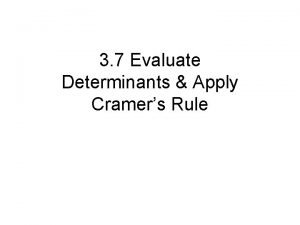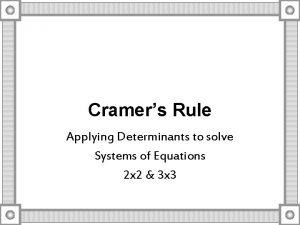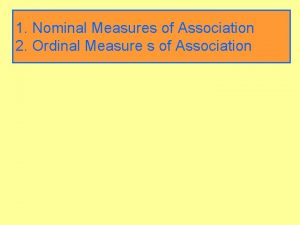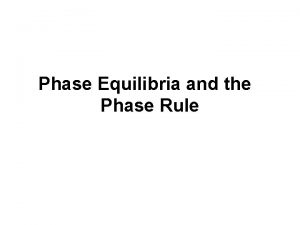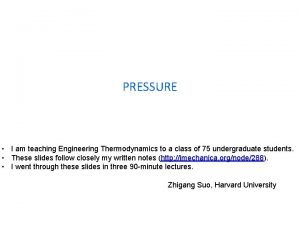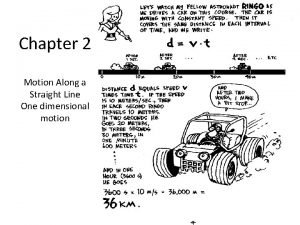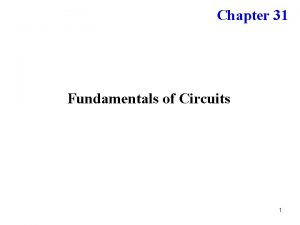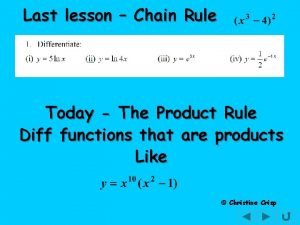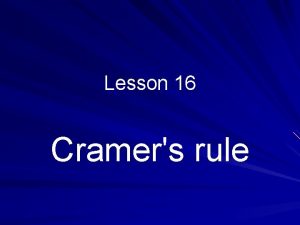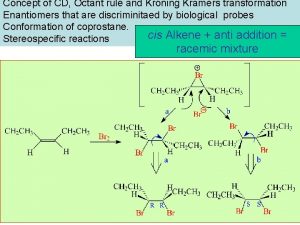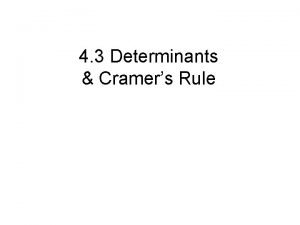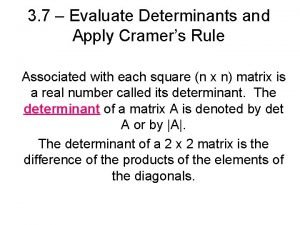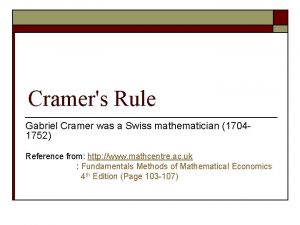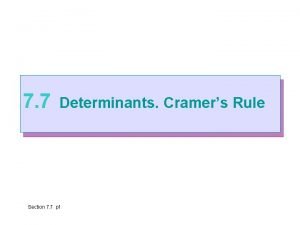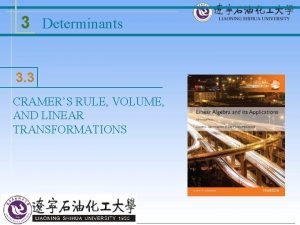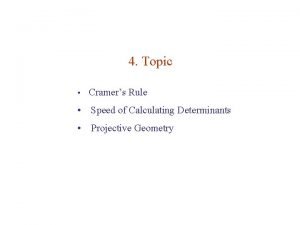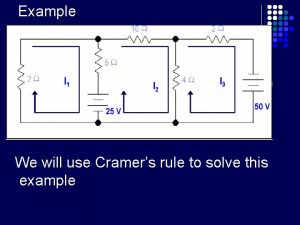Kramers a k a Cramers Rule Component j















- Slides: 15

Kramer’s (a. k. a Cramer’s) Rule • Component j of x = A-1 b is • Form Bj by replacing column j of A with b.

Total Unimodularity • A square, integer matrix B is unimodular (UM) if its determinant is 1 or -1. • An integer matrix A is called totally unimodular (TUM) if every square, nonsingular submatrix of A is UM. • From Cramer’s rule, it follows that if A is TUM and b is an integer vector, then every BFS of the constraint system Ax = b is integer.

TUM Theorem • An integer matrix A is TUM if – All entries are -1, 0 or 1 – At most two non-zero entries appear in any column – The rows of A can be partitioned into two disjoint sets such that • If a column has two entries of the same sign, their rows are in different sets. • If a column has two entries of different signs, their rows are in the same set. • The MCNFP constraint matrices are TUM.

General Form of the MCNF Problem

Flow Balance Constraint Matrix 2 1 3 Capacity Constraints in Standard Form

Shortest Path Problems • Defined on a Network – Nodes, Arcs and Arc Costs – Two Special Nodes • Origin Node s • Destination Node t • A path from s to t is an alternating sequence of nodes and arcs starting at s and ending at t: s, (s, v 1), v 1, (v 1, v 2), …, (vi, vj), vj, (vj, t), t

s=1, t=3 1 We Want a Minimum Length Path From s to t. 5 10 2 7 1 7 4 1, (1, 2), 2, (2, 3), 3 Length = 15 1, (1, 2), 2, (2, 4), 4, (4, 3) Length = 13 1, (1, 4), 4, (4, 3), 3 Length = 14 3

Maximizing Rent Example • Optimally Select Non-Overlapping Bids for 10 periods

Shortest Path Formulation t d 10 -7 -2 d 1 s -2 d 2 0 d 3 -7 0 d 4 -1 d 5 d 6 -3 -6 -1 -11 d 9 -5 0 d 7 -4 d 8 -3

MCNF Formulation of Shortest Path Problems • • • Origin Node s has a supply of 1 Destination Node t has a demand of 1 All other Nodes are Transshipment Nodes Each Arc has Capacity 1 Tracing A Unit of Flow from s to t gives a Path from s to t

Maximum Flow Problems • Defined on a Network – Source Node s – Sink Node t – All Other Nodes are Transshipment Nodes – Arcs have Capacities, but no Costs • Maximize the Flow from s to t

Example: Rerouting Airline Passengers Due to a mechanical problem, Fly-By-Night Airlines had to cancel flight 162 - its only nonstop flight from San Francisco to New York. The table below shows the number of seats available on Fly-By-Night's other flights.

Formulate a maximum flow problem that will tell Fly-By-Night how to reroute as many passengers from San Francisco to New York as possible. 5 SF D 2 C 4 4 6 H (4, 5) D SF (5, 6) H 5 (2, 2) A C (2, 4) (5, 5) A 7 NY (flow, capacity) (2, 4) NY (7, 7) Max Flow from SF to NY = 2+2+5=9

MCNF Formulation of Maximum Flow Problems • Let Arc Cost = 0 for all Arcs • Add an infinite capacity arc from t to s – Give this arc a cost of -1

Maximum-Flow Minimum-Cut Theorem 5 SF D H SF C 4 6 5 2 5 A D C 4 6 H 5 A • Removing arcs (D, C) 4 and (A, NY) cuts off NY SF from NY. 7 • The set of arcs{(D, C), (A, NY)} is an s-t cut 4 with capacity 2+7=9. NY • The value of a maximum s-t flow = the capacity of a minimum s-t cut.
 Furusaki
Furusaki Crammars rule
Crammars rule Matrix cramer's rule
Matrix cramer's rule Cramer's rule application
Cramer's rule application Cramers v interpretation
Cramers v interpretation Cramers v interpretation
Cramers v interpretation Cramers v
Cramers v Cramers v
Cramers v Eutectic mixture definition
Eutectic mixture definition One component system phase rule
One component system phase rule With the rule astigmatism
With the rule astigmatism Prove cosine rule using sine rule
Prove cosine rule using sine rule Chain rule power rule
Chain rule power rule Kirchhoff's loop rule
Kirchhoff's loop rule What is the cold chain rule
What is the cold chain rule Cosine rule bbc
Cosine rule bbc


